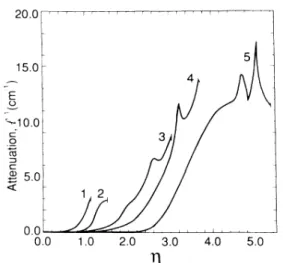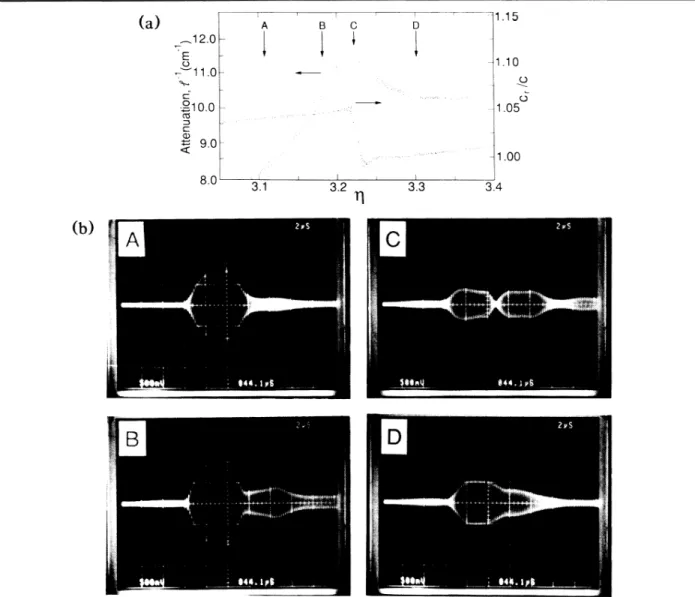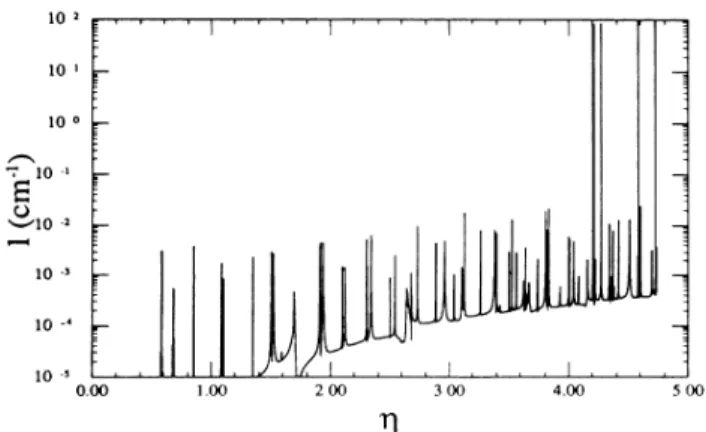Publisher’s version / Version de l'éditeur:
Physical Review Letters, 64, 26, pp. 3135-3138, 1990-06-01
READ THESE TERMS AND CONDITIONS CAREFULLY BEFORE USING THIS WEBSITE.
https://nrc-publications.canada.ca/eng/copyright
Vous avez des questions? Nous pouvons vous aider. Pour communiquer directement avec un auteur, consultez la première page de la revue dans laquelle son article a été publié afin de trouver ses coordonnées. Si vous n’arrivez pas à les repérer, communiquez avec nous à PublicationsArchive-ArchivesPublications@nrc-cnrc.gc.ca.
Questions? Contact the NRC Publications Archive team at
PublicationsArchive-ArchivesPublications@nrc-cnrc.gc.ca. If you wish to email the authors directly, please see the first page of the publication for their contact information.
Archives des publications du CNRC
This publication could be one of several versions: author’s original, accepted manuscript or the publisher’s version. / La version de cette publication peut être l’une des suivantes : la version prépublication de l’auteur, la version acceptée du manuscrit ou la version de l’éditeur.
For the publisher’s version, please access the DOI link below./ Pour consulter la version de l’éditeur, utilisez le lien DOI ci-dessous.
https://doi.org/10.1103/PhysRevLett.64.3135
Access and use of this website and the material on it are subject to the Terms and Conditions set forth at
Experimental evidence for localization of acoustic waves in three
dimensions
Graham, Ian S.; Piché, Luc; Grant, Martin
https://publications-cnrc.canada.ca/fra/droits
L’accès à ce site Web et l’utilisation de son contenu sont assujettis aux conditions présentées dans le site LISEZ CES CONDITIONS ATTENTIVEMENT AVANT D’UTILISER CE SITE WEB.
NRC Publications Record / Notice d'Archives des publications de CNRC:
https://nrc-publications.canada.ca/eng/view/object/?id=2f5077d3-f92c-4a8b-aab9-1e6d6544da8a
https://publications-cnrc.canada.ca/fra/voir/objet/?id=2f5077d3-f92c-4a8b-aab9-1e6d6544da8a
VOLUME 64, NUMBER 26
PHYSICAL REVIEW
LETTERS
25JUNE1990
Experimental
Evidence
for
Localization
of
Acoustic
Waves
inThree
Dimensions
Ian
S.
Graham and Luc PicheIndustrial Materials Research Institute, National Research Council, 75 De Mortagne Boulevard, Boucherville, Quebec, Canada
J4B
6Y4Martin Grant
Department
of
Physics, McGill University, Rutherford Building36, 00University Street, Montreal, Quebec, Canada H3A 2T8(Received 22 February 1990)
We present experimental evidence for localization ofacoustic waves in a novel three-dimensional
sys-tem. The system consists ofa polymer melt solidifying by the growth ofspherical semicrystalline nuclei.
For su%ciently high excitation frequencies, we find renormalization ofsound speed and intense
absorp-tion peaks over very narrow ranges ofwave number. We generalize theory toinclude shear modes in the
scatterers, and find that localization isconsistent with our observations.
PACSnumbers: 42.20.Ji, 43.20.+g, 63.20.Pw, 71.55.Jv The propagation
of
waves in a medium containingran-domly distributed scattering sites can lead to novel
scattering phenomena. Localization ' ' occurs when the
diffusion constant ofthe wave is renormalized to zero by multiple elastic-scattering events. Anderson ' introduced localization in the context
of
electronic systems. Forclassical waves, ' localization occurs for
lt»
lq=A„
where lt is the mean free path for inelastic scattering, lqis the mean free path for elastic scattering, and A, is the
wavelength of the incident radiation. Recently,
investi-gations have been made ofweak-localization effects close to the mobility edge, such as the enhancement of
back-scattered radiation by the constructive interference of
time-reversed pairs of scattering sequences.
"'
This effect has been observed in several optical-scatteringex-periments.
"
' However, strong localization has not yet been seen in light-scattering experiments, and localiza-tion effects with acoustic waves have only been confirmed for special one-dimensional systems.In this Letter we report the first evidence of localiza-tion phenomena for acoustic waves in a three-dimensional system. Our novel system consists ofa
poly-mer melt containing a constant number
of
spherical, equal-sized nuclei. During our experiment the radius a ofthese nuclei increases with time as the solid semicrys-talline phase grows from the liquid. We excite thesys-tem by applying an ultrasonic pulse of fixed width and
constant frequency. We then measure the attenuation and sound velocity through the sample, as well as the shape
of
the transmitted sound pulses. By performing these experiments as a functionof
time we are able toul-trasonically probe the system with a tunable reduced
wave number
g—
=
ka, k being the wave numberof
thein-cident sound wave in the liquid phase. At suSciently high frequencies we observe intense peaks in the attenua-tion. These peaks are narrow, spanning a limited range
of
scattering-site radii. We also observe renormalizationof
the wave velocity. These results are unexpected since the standard analysis would not predict localization under the conditions we consider: Here, the longitudinalsound velocity ofthe scatterers is
faster
than that ofthe medium. However, we find that, on generalizing the self-consistent theoryof
Condat and Kirkpatrick ' toin-clude shear wave excitations in the semicrystalline
scatterers, localization is expected under conditions con-sistent with those of our experimental study. We there-fore conclude that the anomalous attenuation we observe
is a localization-related effect.
It
is not possible without further study to establish whether we are observing strong localization or precursor effectsof
localization,al-though our results are more consistent with the former. The details
of
the experimental apparatus will be presented elsewhere. ' Thesample, a thin
0.
5-cm disk,4.
0
cm in diameter, is confined between two aligned buffer rods having ultrasonic transducers at the outer ends. The buffer rods are free tomove vertically to com-pensate for the thermal expansionof
the sample, and the axial length of the assembly can be measured to within+' 1pm so that sample thickness, and hence volume, can be accurately determined. The whole assembly can be maintained at constant temperatures with a stability
of
~0.
1 K. For measurements, one of the transducers isenergized and provides an effective plane wave across the surface of the sample. Similarly, the second transducer,
used for detection, is sensitive only to signals coherent across the transducer surface. A homodyne system is used to measure the phase
of
the transmitted signal withrespect to the incident pulse, which allows us to measure both the attenuation and phase velocity through the sam-ple. The data are processed to account for the acoustic properties
of
the buffer and the buffer-sample acoustic mismatch. 'We used a sample of isotactic polypropylene (Himont, Varennes, Canada), which has a liquid-solid transition near
T =438
K.
We anneal the liquid sample at 453 Kfor 20 min, and then quench to 425
K.
In a separateex-periment, we used a transmission polarizing microscope to visualize the evolution
of
the structure during solidification. We observed that(1)
the nucleation centers were randomly distributed,(2)
the growth was2Q Qi I l I I ' 1 t I ] 1 1 15.0— E C3
~10.
0 O 05 ~ 5.0 0.0 0.0 1.0 2.0 3.0 4.0 5.0 FIG.l.
Attenuation I 'vsreduced wave number g—=ka for
different measuring frequencies:
(1)
1.75, (2) 2.50, (3) 4.88, (4) 6.00, and (5)8.00 MHz. The curves have been truncated at the volume fraction for random close packing of spheres with radiia(RCP)
125 pm.radial such that the volume ofthe individual spherulite is
0
=4za
/3,(3)
the growth was initiated simultaneously for the different spherulites and therefore their numberwas constant, and
(4)
the growth rate was constant(=
1.5 pm/min) such that the spherulites were ofuni-form size. The system is consequently highly mono-disperse. Making the assumption
of
random-close-packed(RCP)
structures from the solid, we finda(RCP)
=125
pm, corresponding to a number densityn=5x10
/cm . Usinga(RCP),
our ultrasonic tech-nique, which monitors volume, also allows us to assess the radiiof
the scatterers during growth. The systemdoes not evolve over the time scale
of
the acoustic mea-surements, because we probe the system with ultrasonic longitudinal-wave pulsesof
duration=6
psec, with a rise time and fall time of=
2psec. We alsocontinuous-ly measured the attenuation and sound velocity within
the sample at the characteristic frequency
of
theul-trasonic transducers, 1.75, 2.5,
4.
88,6.
0,and 8.0
MHz. Characteristic results for attenuation I versus di-mensionless wave number g are shown in Fig. 1,wherer1=2mva/c, v is the excitation frequency,
a
is the radiusof
the nuclei, and c, the velocityof
sound in the Auid, is1250 m/sec. Here the different curves are truncated at values
of
g coinciding with random close packing. Also, we have subtracted offthe residual attenuationassociat-ed with the viscosity
of
the liquid phase,=0.
5 cmFor the semicrystalline solid, the inelastic absorption is
larger,
—
2 cm'.
Ho~ever, II for both liquid and solidphases is still long on the scale
of
interparticle spacings.At excitation frequencies
of
2.5 MHz and lower, weob-serve a slow rise and subsequent fall in attenuation
of
thesignal as the solid phase nucleates. However, at
4.
88,6.0,
and8.0
MHz we find distinct narrow absorption peaks. The peaks lie at quite different valuesof
g for3136
these different excitation frequencies. They are therefore not due to single-site scattering, since such peaks would lie at the same dimensionless wave number g, regardless
of frequency. Coincident with this strong absorption we
often observe sudden changes in the measured sound ve-locity e, through the sample, as shown in Fig.
2(a).
Thisprovides a clear measure
of
the renormalizationof
thesound velocity.
The shape
of
the transmitted pulses within the absorp-tion peak provides additional evidence of anomalousat-tenuation. Figure
2(b)
shows shapes typicalof
the transmitted pulse envelopes, taken at various positions through the absorption peak, as marked in Fig.2(a).
Far from the strong-absorption regions the transmittedpulse is simply an attenuated version
of
the excitationpulse, with similar shape and length. However, near the absorption region the transmitted pulse becomes
significantly lengthened, and, in fact, splits into two pulses: a directly transmitted pulse and a delayed pulse.
The delayed pulse is not due to reverberations within the sample: It occurs too soon after the initial pulse, and, in
any case, the attenuation is too high for a reverberated
signal to have appreciable amplitude. We find that the position ofdelayed pulse is largely independent
of
theex-citation pulse length. Thus if the incident pulse is sufficiently long, the delayed pulse becomes a
"bump"
onthe tail
of
the main transmitted pulse. We note that the delayed pulse cannot arise from reradiation from excited,oscillating spheres as such a signal would be incoherent
and hence undetectable by our system. We have verified
that the effect remains while changing the amplitude
of
the incident pulse over a rangeof
~
10 dB, which rulesout saturation
of
a resonant absorption mechanism. Fi-nally, we note that the first absorption peak occurs belowthe percolation threshold for the solid phase, so it is
un-likely that bulk resonances
of
the entire system play a role. Having ruled out these other possibilities, we there-fore interpret the delayed pulse as a resonant forward-scattering mechanism, whereby the transmitted pulse is followed by an echo arising from time-reversed scatter-ing paths in the same direction as the incident wave.This is analogous to the resonant backscattering seen in
optical experiments on localization. All these results, the
high attenuation in the narrow peaks, the sound renor-malization, and the anomalous forward scattering can be consistently interpreted as signs
of
localizationof
sound within the sample.Theoretical investigations
of
localization typically consider systems with structureless scatterers, unlike the more complex system we have studied. In that case, lo-calization requires the refractive indexM
=c/c,
to obeyM
)
1 wherec
is the sound velocity in the matrix ma-terial andc,
is the sound velocity in the scatterers. Here,the velocity
of
sound in the solid phase e, is=1600
m/sec, implying
M=0.
78, so simple theories would nor imply localization. However, the nuclei support shear modes,of
velocityc,
'=
350
m/sec, which we expect toVOLUME 64, NUMBER 26
PHYSICAL REVIEW
LETTERS
25JUNE 1990 12.0—
I E O=11.
0-=
—10.0—
G$ 9. 0--8.0 A 3.1 3.2 D 3.3 —1.10 O 1.05-1.
00 3.4FIG.2. (a)Attenuation i and ratio ofmeasured velocity tovelocity in the liquid c,/c as afunction ofreduced wave number q in the vicinity ofthe absorption peak for the 6.00-MHz data. (b) Photographs from oscilloscope showing shape oftransmitted
sig-nals; labels A,
8,
C,and D refer tovalues ofq indicated by corresponding labels in(a).
Relative tosignal A, the amplifier gain is up12dBforsignal
8,
14dBforsignal C,and 10 dBfor signal D.significantly modify the single-site scattering amplitude,
giving rise to resonant effects. Thus, motivated both by
the nature ofour experimental system and by our obser-vations
of
anomalous attenuation we have generalized the previous self-consistent localization theory due toCondat and Kirkpatrick to include scatterers which
support shear.
Following standard treatments' we define the in-cident, scattered, and internal displacement waves in
terms
of
the two fieldsy
andz.
These fields correspond, respectively, to the longitudinal and transverse partsof
the wave. We describe the incident plane wave in the negative z-axis direction by the fieldy;,
given bytp;
=
p
(
—
i)
+'(2m+1)
—
1j
(kr)P
(cos8),
m 0 k
where k
=2'/c
is the longitudinal wave number in thefluid phase,
c
is the longitudinal wave velocity in thefluid,
j
are spherical Bessel functions, andP
are the Legendre polynomials. The outgoing scattered fieldy,
can can be defined similarly. Within the scatterers there are longitudinal modes,
y,
=
g
(
i)
+'(2m+—
1)aB
j
(k,
r)P
(cos8),
m 0
and shear modes
&,
=
p
(i)
+'(2m+1—
)aC
j
(a'r)P (cos8),
m 0
where
k,
2&f/c, and x'=2+I//c,' are the wave numbers corresponding to the longitudinal and transverse partsof
the wave,c,
is the longitudinal wave velocity, andc,
isthe transverse wave velocity in the scatterers.
To
deter-mine the amplitudeof
the scattered wave, we solve the10z 10' ~ I t I 1 i ~ t l I I I i \ I I 10o 10 10 10-' 10.s 0.00 300 4.00 I 500 FIG. 3. Attenuation l ' as
a function of reduced wave number g as predicted by theory foran excitation frequency of 8.00MHz. The large peaks (I '
)
10)correspond to localizedstates.
boundary conditions for the continuity
of
the displace-ments and stresses across the interface between thescatterer and the fluid.
It
is straightforward to solve for the amplitude coefficientsA,
from which the angle dis-tribution function is given byOO
4+(8) = —
—g
(2m+1)A P (cos8).
k
-p
With this expression, we calculate the renormalized
sound velocity and solve the self-consistent equation for the diff'usion constant D in exactly the same manner as
Refs. 6 and 7. The expression for the attenuation is
I '
=c/3D.
Characteristic theoretical results corresponding to our experimental values of number density
of
nuclei andc,
' are shown in Fig. 3 for excitation frequencyf
=8
MHz. For sufficiently high excitation frequencies, we obtain large peaks in the attenuation over a narrow rangeof
di-mensionless wave number g. We also obtain significant renormalization
of
the phase velocity through this re-gion. These eff'ects, which are clearly seen in our experi-ments, are indicativeof
the onsetof
localization. We therefore conclude that current models for classical wavelocalization are qualitatively consistent with our experi-ment, once shear-mode excitations are taken into
ac-count. Finally, our theoretical analysis suggests, quite generally, that scatterers supporting shear modes can form ideal systems for the study
of
acoustic localizationin three dimensions. For example, broader and more prominent localized states than those in Fig. 3 are pre-dicted to occur in systems with a larger velocity mismatch between the scatters and the matrix (for
ex-ample,
c,
/c)
2)
and a large transverse velocity withinthe scatterer (for example,
c,
'/c,)
0.25).
Such situationsmay be possible with suitably prepared polymer systems,
and clearly represent promising systems for the observa-tion
of
Anderson localization.In conclusion, we have presented the first evidence for acoustic-wave localization phenomena in a
three-dimen-sional system. Our results demonstrate enhanced
at-tenuation and phase-velocity renormalization within the absorption peaks, which are consistent with the predic-tions
of
localization theories. Finally we havegeneral-ized the predictions of current models for localization to
include shear-mode excitation
of
the scatterers. Thisyields results which are qualitatively consistent with
those ofthe experiment.
We thank Dik Harris, Hong Guo, and John
Strom-Olsen for useful discussions and suggestions. The au-thors also acknowledge the technical assistance
of
Ginette Lessard and Andre Hamel. This work was sup-ported in part by the Natural Sciences and EngineeringResearch Council
of
Canada, and by les Fonds pour la Formation des Chercheurs et 1'Aide a la Recherche de la Province du Quebec.'P. W. Anderson, Phys. Rev. 109,1492
(1958).
2S. John, Phys. Rev. Lett. 53, 2169(1984). 3P. W.Anderson, Philos. Mag. B52, 505 (1985).
4P. Sheng and Z.-Q. Zhang, Phys. Rev. Lett. 57, 1879
(1986).
5K. Arya, Z. B.Su, and
J.
L. Birman, Phys. Rev. Lett. 57,2725 (1986).
sC.A. Condat,
J.
Acoust. Soc.Amer. 83,441(1988).
7C. A. Condat and T. R.Kirkpatrick, Phys. Rev. B 36, 6782
(1987).
&C.M. Soukoulis, E.N. Economou, G.
S.
Grest, and M. H. Cohen, Phys. Rev. Lett. 62,575(1989).
I.Edrei, M. Kaveh, and B.Shapiro, Phys. Rev. Lett. 62, 2120
(1989).
' Classical localization is reviewed
by D. Sornette, Acustica
67, 199(1989);67,251 (1989);68,15
(1989).
''E.
Akkermans, P. E, Wolf, and R. Maynard, Phys. Rev.Lett. 56, 1471 (1986),and references therein.
' Y. Kuga and A. Ishimaru,
J.
Opt. Soc. Am. A8, 831 (1984).
' M. P. van Albada and A.
Lagendijk, Phys. Rev. Lett. 55,
2692 (1985);M. P.van Albada, M. B.van der Mark, and A. Lagendijk, Phys. Rev. Lett. 58,361
(1987).
'4P.-E.Wolfand G.Maret, Phys. Rev. Lett. 55, 2696(1985).
' S.Etemad, R.Thompson, and M.
J.
Andrejco, Phys. Rev. Lett. 57, 575 (1986);
S.
Etemad, R. Thompson, M.J.
An-drejco, S.John, and F. C. MacKintosh, Phys. Rev. Lett. 59,1420(1987).
' M. Kaveh, M. Rosenbluth,
I.
Edrei, and I. Freund, Phys. Rev. Lett. 57, 2049 (1986); l.Edrei and M. Kaveh, Phys. Rev. B35,6461 (1987).
' C.H. Hodges and
J.
Woodhouse,J.
Acoust. Soc.Amer. 74,894 (1983); S. He and
J.
D. Maynard, Phys. Rev. Lett. 57, 3171 (1986).'SL.Piche (tobe published).
' R.Truell, C.
Elbaum, and B. B.Chick, Ultrasonic Methods
in Solid State Physics (Academic, New York, 1969).


